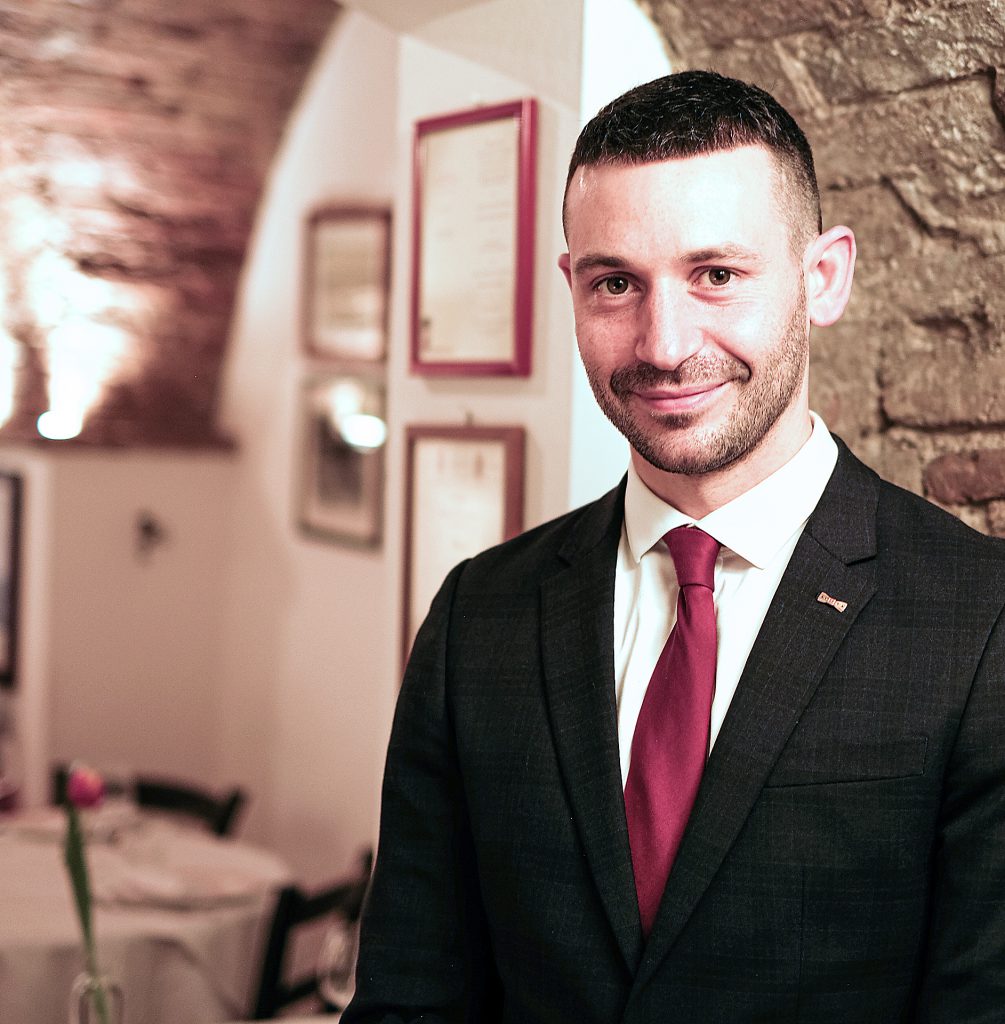History
1980: our brief history begins

La nuova generazione di Taverna 58, ma la stessa pasta di sempre
In 2020 Gabriele Di Leandro takes over the direction of the renowned restaurant, and he does so with the right mindset, carrying on the work that Giovanni Marrone performed with dedication and pride for over 40 years, keeping all the traditions of the past, but with a new direction and renowed passion.

In 1980 Corso Manthonè was still one of the out-of-the-way areas of Pescara, the old town, a sort of slum, so far from the crowds, the lights, and the pomps of Corso Umberto and Piazza Salotto.

“These people of saints, poets, sailors, of nephews, of brothers-in-law…””
Ennio Flaiano

Memories of Tomassino the barber
When he was young, Tommaso Cipollone, the barber, used to cut don Mario’s hair, Prince of Montenevoso, Gabriele d’Annunzio’s son, at home (there Tommaso’s father had cut the illustrious poet’s hair). His housekeeper was always at home, in the kitchen with Marietta Camerlengo. Tommaso was a real gentleman. He was always very kind with his customers. The furniture in his shop led back to very past times. He knew the story of all the inhabitants who had their hair cut in his shop. When he was 80, he was forced to close down because of an eviction. “You know, in Corso Manthonè, the main street of Pescara, from 6 to 9 pm (and in summer till 10-11 pm) there was the “struscio”, a parade of embellished people strolling up and down the street. Many ladies wearing a fox fur strolled up and down, talking and laughing. How beautiful they were… and scented too! They passed me by very closely. I can still remember each of them: they were blond or dark-haired, tall and so buxom!… Their names were Jolanda, Margherita… I used to watch all this leaned against the door of the shop or sitting down in a chair my father set out there for the customers waiting for their turn. Perhaps you don’t believe me, but I was always happy. All around there was a frisky atmosphere. Not always, but… I think it was certainly more frisky than it is today. On Saturday afternoon, after the mandatory course addressed to youngmen being about to do military service, when the band of Spoltore started to play (it was the 129th fascist legion), Corso Manthonè turned into a great feast. Thinking it over, there was always music.Taverna 58 staff is consolidated from time immemorial. Two of the members have been working with Giovanni Marrone since almost the beginning of his venture: chef Giuseppe Marro (since 23th January ‘85) and Domenico Di Stefano (since 11th February ’85) are in the kitchen staff.

“We spend most of our time in the tavern rather than with our own families. This harmony among us is one of the strong points of the restaurant. What is the secret for holding the team together? I tried to meet their needs, knocking the rough edges off the antisocial habits (it seems to be unbelievable…) connected with this job. That’s the reason why the restaurant is closed on Saturdays for lunch and on Sundays, in August, on Christmas and on New Year’s Day. This way it seems to be quite a common job.” Giovanni Marrone